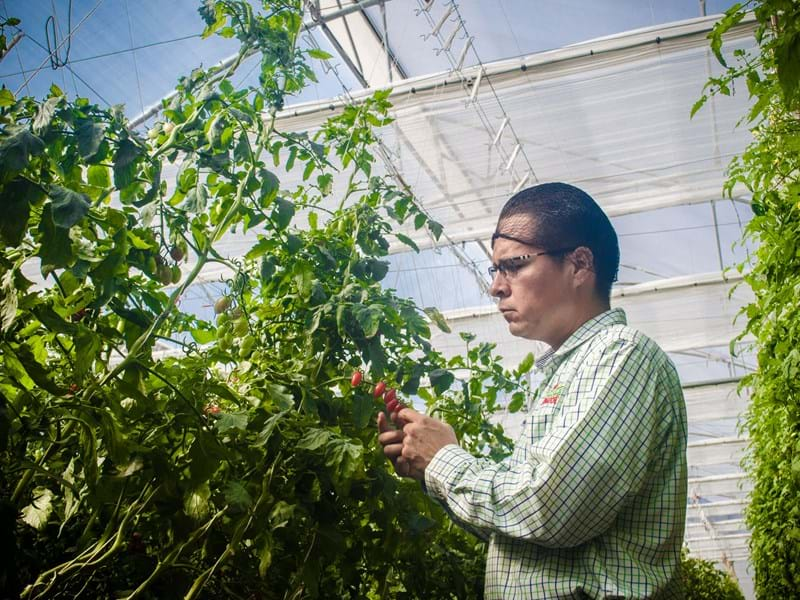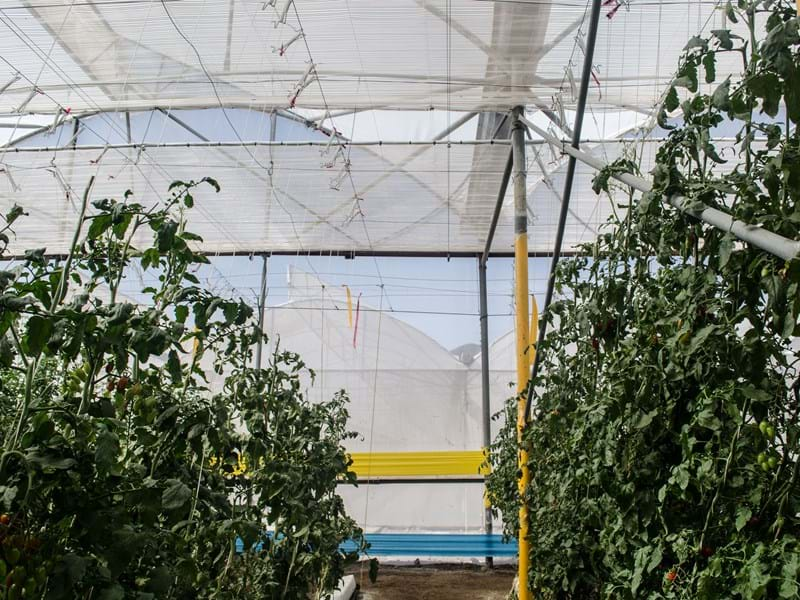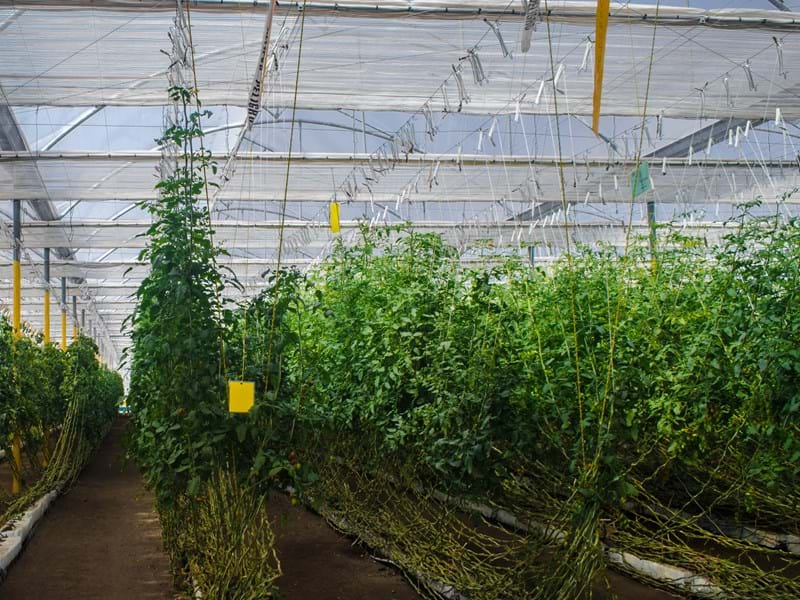Higher yields at NatureSweet using high porosity insect control screens
In the state of Colima, México, at a 20⁰ latitude near the coast, we find one of the largest greenhouse tomato production operations of the industry leader – NatureSweet. In this operation consisting of 81 greenhouses, the extreme heat and humid conditions make greenhouse ventilation and insect control a main priority.
For a company like NatureSweet, tomato production is a serious business. Founded in Devine, Texas in 1990 under the name Desert Glory LTD, the company began selling tomatoes nationwide in the United States in 2012. Nowadays, the company is the number one supplier of tomato on the vine in the United States, guaranteeing a year-round supply of specialty tomatoes of the highest quality.
To satisfy the growing market demand of high-quality tomatoes year-round, NatureSweet is continuously looking for better production technologies and evaluating options that can help them to become more efficient and achieve higher yields.
“High temperatures make us very cautious when it comes to selecting the technologies that we want to implement. What I’m looking for is an improvement in the climates within the greenhouses. However, one of the limitations or one of the factors that has the most influence and impact on productivity in climates like here is a burden of insects and diseases,” says Manuel Matías, general manager of NatureSweet’s Colima operation.

Tropical areas like Colima experience hot, muggy conditions both day and night for much of the year, with high temperatures of up over 35⁰C and characterized by heavy downpours on a regular basis. In lowland areas, the humidity can be extreme, ranging from 50% to 100%. Light levels can fluctuate from being high on bright sunny days to being rather low under overcast conditions, particularly during the rainy season.

“Historically, the main challenges this plant faces have been what you might expect they would be here, which is basically high relative humidity, high temperatures, which are factors that normally are a negative for the production cycle, for high productivity. We’re basically talking about climate variables,” adds Matías.
There are not many tools or technologies available for climate control in passive greenhouses. Growers need to look for products that can help them to manipulate or benefit the most from the existing climate conditions. In its quest to mitigate greenhouse ventilation deficiencies and insect control in its Colima operation, NatureSweet tested in one of its greenhouses Xsect Balance--a thin-yarn insect control screen with higher porosity that allows for better ventilation, and compared the climate differential with another greenhouse with the same characteristics using conventional screens.
Grower Miguel Vega explains “The difference we saw with Xsect Balance versus the mesh we used before was that ventilation improved a lot. It was totally different, a big change, even the crops at the center of the greenhouse managed to get ventilation, because Xsect Balance screen greatly benefited that aspect. It helps us ventilate, it helps us with the air exchange rate inside the greenhouse, it lowers the temperature, and even helps us to balance out the outside humidity with the inside humidity.”
Prior to using Xsect Balance insect control screens, NatureSweet had tried other high porosity screens, and although those screens increased the ventilation, they also allowed a high population of insects to enter the greenhouse.

By installing Xsect Balance in the test greenhouse they were able to control the entrance of insects to the greenhouse and to reduce the temperature as much as two or three degrees lower than the outside temperature, which translated into 15% more production compared to the greenhouse using conventional mesh.
“Our goal is to include technologies with a return on investment in less than two years; Xsect Balance achieved this difficult goal.”




